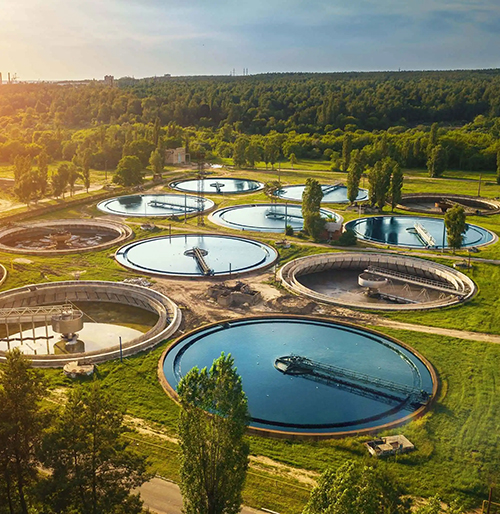
I. Expansion and Renovation Project of Guangdong Water Plant

(1) Project Scale:
The Phase I expansion project of Guangdong Water Plant has a total capacity of 270,000 m³/day (Phase I: 120,000 m³/day; current phase: 150,000 m³/day).
(2) Planned Renovation Method:
The expansion of the disinfection system involves dosing with a sodium hypochlorite solution containing 10% available chlorine. Three dosing point chlorination method is adopted: the pre-chlorination point is set in the raw water pipeline, with a dosage of 2 mg/L; the post-chlorination point is set at the effluent weir (pipe) of the filter, with a dosage of 1.0 mg/L; and the supplementary chlorination point is set at the suction well of the delivery pump station, with a dosage of 0.5–1 mg/L. The total chlorine dosage for the entire expanded water plant is 4 mg/L.
II. Comparative Cost Analysis Between Dosing with Finished Sodium Hypochlorite Solution (10% Concentration) and On-Site Sodium Hypochlorite Generation for Disinfection
(1) Cost Analysis of Disinfection Using Finished Sodium Hypochlorite Solution:
Sodium hypochlorite solution with 10% available chlorine (100,000 ppm) = 100 g/L.
Daily treatment requirement: 270,000 m³ of raw water, with a total chlorine dosage of 4 ppm.
Daily required available chlorine = 270,000 m³/day × 4 mg/L = 1,080,000 g/day = 1,080 kg/day.
Daily required volume of sodium hypochlorite solution with 10% available chlorine = 1,080,000 g/day ÷ 100 g/L = 10,800 L = 10.8 tons.
For disinfection of drinking water, food-grade sodium hypochlorite solution must be used. The price of food-grade sodium hypochlorite solution in Guangdong Province is 1,100 RMB/ton.
Thus, the daily disinfection cost is: 1,100 × 10.8 = 11,880 RMB/day.
11,880 RMB/day = 4,336,200 RMB/year = 4.3362 million RMB/year.
(2) Cost Analysis of Disinfection Using Purevita Sodium Hypochlorite Generator:
2.1. The sodium hypochlorite generator system produces sodium hypochlorite solution by electrolyzing a dilute brine solution, requiring no other additives. The only raw material is salt. The equipment operates fully automatically with low labor costs, so the total operating cost essentially consists of salt and electricity consumption.
2.2. The cost to produce 1 kg of available chlorine comprises: salt + electricity.
The expanded Guangdong Water Plant requires 1,080 kg of available chlorine per day.
◎ Salt consumption: ≤ 3.75 kg (Purevita sodium hypochlorite generator; salt consumption per kg of available chlorine produced: ≤3.75 kg).
3.75 kg/kg × 1,080 kg/day = 4,080 kg/day (total daily salt consumption by the main equipment).
◎ Electricity consumption: ≤4.0 kWh (Purevita sodium hypochlorite generator; DC power consumption per kg of available chlorine produced: ≤4 kWh).
4.0 kWh/kg × 1,080 kg/day = 4,320 kWh/day (total daily electricity consumption by the main equipment).
Daily salt cost: 1,000 RMB/ton × 4.08 tons/day = 4,080 RMB/day (price of non-iodized edible salt in Guangdong, including transportation and handling fees).
Daily electricity cost: 0.7 RMB/kWh × 4,320 kWh/day = 3,024 RMB/day (local electricity price: 0.7 RMB/kWh, average including peak rates).
◎ Total daily disinfection cost: 4,080 RMB/day + 3,024 RMB/day = 7,104 RMB/day.
7,104 RMB/day = 2,592,960 RMB/year = 2.59296 million RMB/year.
Comparison of the Two Analyses:
Annual disinfection cost using finished sodium hypochlorite solution: approximately 4.35 million RMB.
Annual disinfection cost using on-site sodium hypochlorite generation: approximately 2.60 million RMB.
Comprehensive Conclusion: For the expansion and renovation of Guangdong Water Plant, using an on-site sodium hypochlorite generation system for disinfection could save 1.75 million RMB annually in disinfection costs alone.
